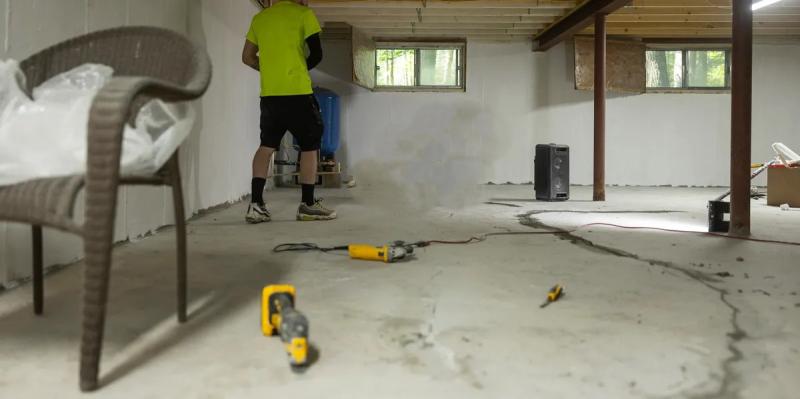Basement Floor Crack Repair

Why Do Basement Floors Crack?
Is It Necessary to Repair Floor Cracks?
Yes! Repairing cracks in your basement floor is essential for several important reasons:
1. Prevent Moisture Damage
If left unaddressed, cracks can allow moisture to seep into the basement, leading to musty odors and potential mold or mildew growth. This is particularly important if you plan to finish your basement or install flooring like carpet, as moisture can penetrate even moisture-resistant pads, causing unpleasant smells and potential damage.
2. Radon Prevention
Cracks in the floor can provide an entry point for radon gas, which is the second leading cause of lung cancer. Since up to 50% of the air we breathe in our homes may come from the basement, it’s crucial to seal these cracks to prevent radon from entering your living space.
3. Insect Control
Sealing basement floor cracks helps keep insects and pests out, especially if you're planning to finish the basement. This simple step is an effective way to protect your home from unwanted invaders.
How Do We Fix Basement Floor Cracks
We offer an effective and permanent solution for repairing basement floor cracks through Epoxy Injection—a gravity-fed process.
Epoxy Injection (Gravity-fed Process)
This method involves injecting a two-part epoxy resin mixed with coarse sand into the crack. The epoxy fully penetrates the floor's thickness, "welding" the concrete back together. Once the epoxy cures, it forms a strong, permanent bond that effectively seals the crack, preventing moisture, radon, and insects from entering your home.
While this repair method is highly durable, it's important to note that it does not protect against water intrusion caused by hydrostatic pressure. If the water table beneath the floor is too high, the pressure may cause further cracking over time, despite the repair.



